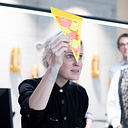The SCARF model — bitesize
Created from a whole heap of research by Dr. David Rock in 2008 (he has several books, many articles and some great online talks), it’s a great straightforward psychological theory of motivation, less carrot and stick, more neuroscience inspired.
According to David we are driven to seek out these following these following stimuli….
The five stimuli are:
• Status: the relative importance of an individual to others and their own sense of worth as a result.
• Certainty: being able to predict future events with few major surprises.
• Autonomy: being able to have control over oneself and events.
• Relatedness: a sense of connection and safety in relation to others.
• Fairness: a perception of a just and fair environment.
I am going to keep this short as theres loads of great recourses on this and I will share at the end…
It is one of those lovely common sense models that you go “Oh Yeah” why did I not think of that, I love to pair this with the Drama Triangle. Sometimes I trip up and someone gets a bit frosty with me OR I get angry with someone… this is a great model to reflect on.
From my point of view if I get feedback that triggers me or I come away from a meeting feeling somethings not sitting right, its usually one of these has been triggered, I reflect on the feeling, what may have been triggered, eg my status and sense of fairness was agitated and then its time to understand, is this a “me thing” to deal with, and its not so bad after a bit of time, or do I need to have a discussion with that person.
On the flip side if someone sends a message that seems off, theres often clues in there to something in SCARF thats been rattled, eg do they nod to their status or mention control, again reflect, respond with this in mind trying to alay any threat responses triggered by you.
SCARF works both ways, its great to consider when giving feedback, communicating in general or in social interactions, how do you amp up the ‘reward’ response, it sounds Machiavellian, but its not, it simply being an emotionally aware human.
Respect status through shared respect
Certainty — share strategies, timelines, expectations and the bigger picture so they feel involved
Autonomy — Collaborate! Share decision making where appropriate, play to peoples strengths, they’ve got this! keep building trust and give them space
Relatedness — Get that genuine human connection in there, we are not bots, we have lives and feelings, work on that team culture it always pays off
Fairness — Rules are not a bad thing, it allows us to play fair, gives bounderies and expectations, keep the tranparent and consistant for all
Thats a bitesize version — but practice getting your SCARF on it really does help you pause and understand where that trigger maybe coming from for you or a team member
Great recources for understanding SCARF
David Rock talking Scarf — https://www.youtube.com/watch?v=5Wu33SdjeCs
Illustrated video — https://www.youtube.com/watch?v=PKYP3S92RqU
Mindtools — https://www.mindtools.com/akswgc0/david-rocks-scarf-model
Bitesize with lovely illustrations — https://www.bitesizelearning.co.uk/resources/scarf-model-david-rock-explained
The commons — https://commonslibrary.org/the-scarf-model-for-psychological-safety-in-groups/
